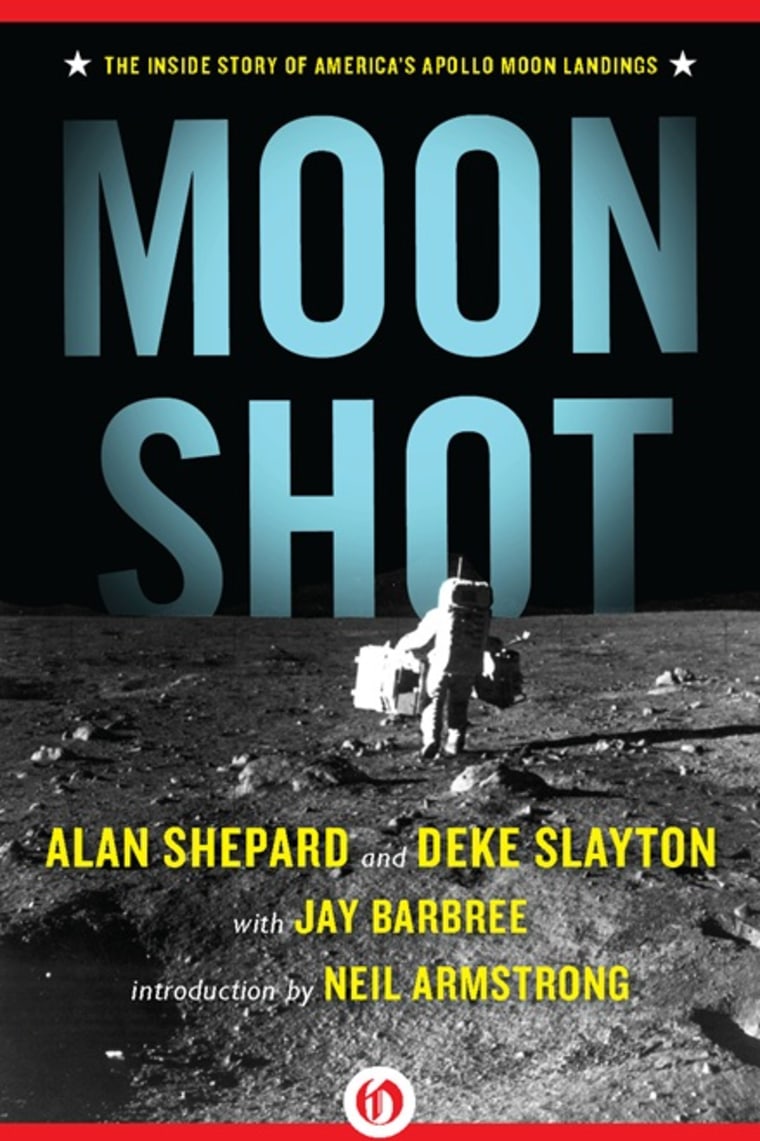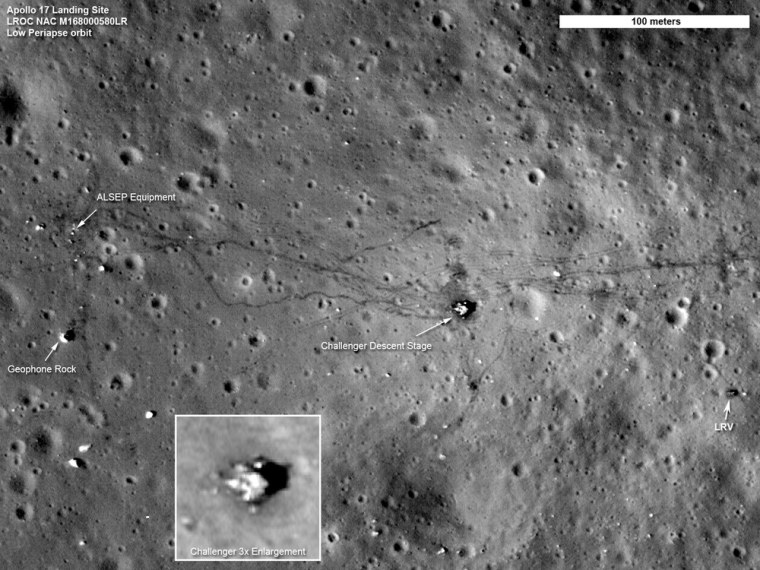As Atlantis rolled to a stop on its Florida landing strip, ending the space shuttle fleet’s 30-year run, the atmosphere around NASA was filled with uncertainty.

It's not like it was 42 years ago, at the time of America’s highest space triumph. That’s when Neil Armstrong took humankind’s first steps on the moon. The only thing for sure following Atlantis’ farewell flight is that most members of its launch team will be out of a job.
Critics say NASA is in shambles. They say foot-dragging and indecision by the Obama administration has left America with no defined mission in space. NASA Administrator Charlie Bolden, a veteran astronaut himself, strongly disagrees. "I’m not about to let human spaceflight go away on my watch," he says.
Despite the dithering, private companies could have Americans flying in their commercial spacecraft by 2015, and Bolden says test flights aimed at sending astronauts to deep space on NASA spaceships could begin in 2016 or 2017.
Back in 1969, the scene at America’s spaceport was clearly different: Neil Armstrong and Buzz Aldrin’s walk on the moon represented the height of prestige for America’s space program. The country was first. Americans were beating the Russians. A decade-long race to put a human on another world had ended.
Pride poured from cheering throats across the country, from New York's Times Square to San Francisco’s Golden Gate Bridge.
It was good to be an American.
Boots on the Moon: An excerpt from "Moon Shot"
Neil Armstrong stepped backward from the lunar module’s hatch. He headed for where no human had ever gone, toward the surface of a world devoid of life, a surface below with craters and endless dust — an alien world with the rubble of cosmic bombardment.
He felt strangely comfortable. Both his booted feet touched the ladder’s rungs with confidence as billions on distant Earth were fixed on their television screens, on a ghostly figure of a space-suited human moving slowly and steadily down the ladder.
Suddenly he was there.
Billions watched as Neil dropped to the moon’s surface.
Touchdown.
His left foot pressed hard on a fine-grained surface at 10:56 p.m. Eastern Time on July 20, 1969.
"That’s one small step for man, one giant leap for mankind," Neil said slowly as he looked down, studying the lunar soil beneath his boots. "The surface is fine and powdery," he reported to a fascinated world. "It adheres in fine layers, like powdered charcoal, to the soles and sides of my boots. I only go in a fraction of an inch, maybe an eighth of an inch, but I can see the footprints of my boots and the treads in the fine, sandy particles."
Neil didn’t know it at the time, but it was these highly defined footprints that armchair physicists would offer as "proof" that the moonwalk was a fake.
Humans would rather think the worst of themselves than the best.
Myth-believers claimed that Neil and Buzz could have only left such firm, defined bootprints in soil with moisture. But close examination of the lunar soil brought back to Earth showed it to be virgin. The grains still had their sharp edges. They had not been rounded off by wind and erosion in an Earthlike atmosphere. In the vacuum, the sharp edges of the lunar soil cling together, leaving a smooth surface much as moist sand does on a beach.
"Where were the stars?" the myth-believers asked. The cameras that NASA sent to the moon had to use short-exposure times to take pictures of the bright lunar surface and the moonwalkers’ white spacesuits. Stars’ images, easily seen by Armstrong and Aldrin, were too faint and underexposed to be seen as they are in photographs taken from space shuttles and the International Space Station.
And why didn’t the descent rocket carve out a crater? Its thrust was simply too weak to make a huge dent in the lunar crust.
The two moonwalkers had problems jamming the American flag into the lunar surface. Even though a metal rod held the flag extended, the subsurface soil was so hard that they had to bang and push on the pole to get it to barely remain upright. Their forcible actions left the flag’s staff rocking back and forth for an unusual length of time. The myth-believers claim that it was wind blowing the flag.
There’s no wind on the moon, just vacuum. But an object forced into repeating motions in a vacuum repeats the motions many more times than it does in atmospheric drag. The flag’s motion was later duplicated in a vacuum chamber at the Marshall Space Flight Center in Huntsville, Alabama, for the Discovery Channel’s "Myth Busters" television show.
With Old Glory standing, Neil moved off to take more pictures while Buzz set up various instruments. One was a multi-mirror target for returning laser beams fired from Earth — laser reflectors that have been used worldwide to determine the distance to within an inch between Earth and the moon.
Many universities and governments have used the Apollo laser reflectors, and if American astronauts didn’t put the laser reflectors precisely at the Apollo landing sites, what and who did?
Orbiter provides more proof
Four decades would pass before the myth-believers’ claims could finally be put to rest. NASA’s Lunar Reconnaissance Orbiter sent back pictures of the Apollo landing sites as it circled the moon.
The pictures show all six of the Apollo descent stages that served as the moonwalkers’ launch platforms for their trips home, including Apollo 11’s resting place, where Neil and Buzz left Eagle's base on the moon’s Sea of Tranquility.
The Apollo 14 landing area shows a faint trail of Alan Shepard’s and Edgar Mitchell’s two-mile round-trip walk to Cone Crater, pulling their “rickshaw” tool and sample mover.
The Apollo 17 picture is so detailed that experts can tell which way the wheels were pointing when the astronauts abandoned their lunar rover in 1972.


It’s clear there was no fraud, but despite the overwhelming evidence, many still believe the Apollo landings never took place.
Postscript:
I've reported for NBC News on every launch of American astronauts from Cape Canaveral — 166 to date, including the Apollo moon landings. And the arguments of the myth-believers leave me with questions: If NASA was trying to get away with a fraud, why didn’t the agency stop after one landing? Who in his right mind would try to get away with the same lie nine times, for Apollo 8 and Apollo 10 through 17?
Another question: Just how was it NASA convinced 400,000 Apollo workers, the space press corps, with solid sources located in and out of Apollo, and the Russians and the British and the Chinese who were tracking America’s nine trips to the moon to lie?
As the reporter who broke the cause of the Apollo 1 launch pad fire that killed three, and the cause of the Challenger accident that killed seven, I promise you: NASA would never have gotten such a fraud by me.
More from 'Moon Shot':
- Yuri Gagarin: Relive the world's first space odyssey
- Alan Shepard: How America's first astronaut 'got it done'
- John Glenn: Mystery surrounded first American in orbit
- Apollo 1 fire: A spark touches off Apollo's darkest hour
- Apollo 8: Round-the-moon flight revised our perspective
- Apollo 11, Part 1: Moments of tension and triumph
Excerpted from "Moon Shot: The Inside Story of America's Apollo Moon Landings," by Alan Shepard and Deke Slayton with Jay Barbree. Reprinted with permission. Published by Open Road Integrated Media, copyright 2011. "Moon Shot" is available from , , , and .